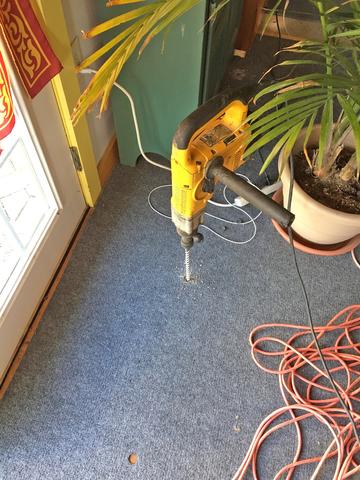Exterminators in Belmar, NJ
Challenge
Recently, I went on a service call to a home in Belmar, NJ, after the homeowner contacted us because of a termite infestation in her art studio. Termites cause more property damage than any other pest. Termite damages in the U.S. are estimated to be over $5 billion annually. And an unpleasant surprise to many homeowners is that these damages are not covered under most homeowner insurance policies since they are considered preventable. A mature subterranean termite colony can have more than a million hungry workers capable of consuming over 100 pounds of wood every year. The scariest part is that termites never stop— they feast 24/7 year-round.
As I began my inspection, I immediately noticed that one of the support beams showed outward signs of termite damage. Sure enough, upon closer inspection, I found a healthy colony of termites inside the beam busy chewing the wood! How were they getting inside? I conducted a thorough inspection of every inch of the studio and determined that the termites gained access through a tiny opening in the utility room where the client was storing discarded wooden picture frames.
After surveying the termite damage in the art studio, I decided to do some more detective work and inspect the homeowner's upstairs apartment as well. Good thing I did! While inspecting the front door frame, I found even more termites! The infestation in the art studio was so heavy that termites were traveling all the way up to the apartment to seek more wood to eat.
Solution
This was an exceptionally heavy infestation that required a comprehensive treatment in order to effectively target the termite colonies. To treat termites, you need to treat the underlying soil where their subterranean nest is located. Here, I had to drill through a concrete slab covered with carpet. I used a carpet punch to punch out some carpet plugs so that I could then drill through the slab. Now, with access, I could inject a liquid application under the slab. This application binds tightly to any treated area to create a protective treatment zone that the termites cannot detect. Once a termite comes in contact with this application they will carry it back to their colony, transferring it to other termites. In a short period of time, the entire termite colony will be eliminated. I then neatly glued the carpet plugs down and sealed the holes with concrete. When finished, no one could ever tell that the room was once treated for termites. I then went to the utility room, drilled through the concrete and applied the liquid application there as well.
I advised the homeowner that the discarded wood was a major termite attractant, and it needed to be stored at least 20 feet from her property in a designated waste container. As an added measure, I placed numerous monitoring devices around the home to detect new termite threats. Finally, I scheduled a follow-up inspection to assess the treatment and determine any additional steps, as necessary. With termite infestations, the job is not completed until these wood-destroying insects are gone!


